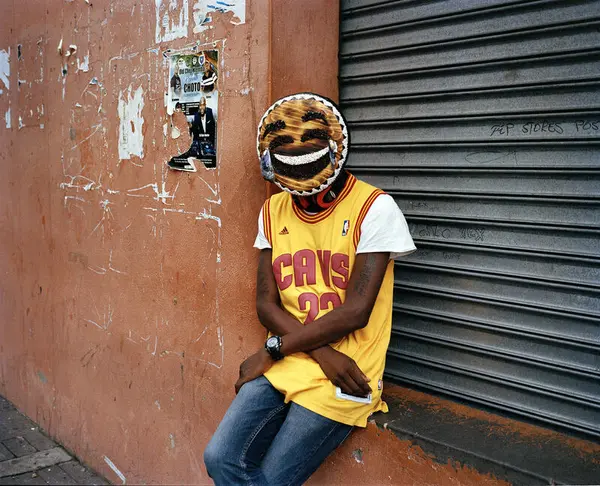- 1/1
© Toufic Beyhum, Amoji LOL Cavs, 2018
Toufic Beyhums serie "Amoji" viser møtet mellom tradisjonell og moderne kultur. Serien er inspirert av hvordan det afrikanske kontinentet er stadig mer påkoblet, og det uunngåelige sammenstøtet mellom moderne og tradisjonelle kulturer.
- 1/1
© Toufic Beyhum, Amoji Crying Beachboy, 2018
Beyhum ga unge, namibiske kunstnere i oppdrag å gjenskape kjente emojier i stilen til afrikanske masker ved å bruke både resirkulerte og tradisjonelle namibiske materialer. Bildene blir kraftfulle metaforer for Afrikas unike forhold til resten av verden.
- 1/1
© Toufic Beyhum, Amoji Flexed Biceps, 2018
Ved å kombinere tradisjonelle namibiske materialer med emojis, har Beyhum forvandlet det universelle bildet av en emoji til et som umiddelbart er gjenkjennelig som et afrikansk motiv, og samtidig vise fram et Afrika i den globale fortellingen der moderne og tradisjonelle kulturer kolliderer.
Her kan du lese Toufic Beyhums prosjektbeskrivelse
Amoji Masks, 2018
Project description
But, how do I really feel?
Toufic Beyhum’s ‘Amoji’ represent the clash between traditional and modern culture
‘Amoji’ – the title of Toufic Beyhum’s latest series of photographs – was inspired by the ever-increasing connectivity across the African continent, and the inevitable clash between modern and traditional cultures. Beyhum commissioned young, Namibian artists to recreate familiar emojis in an ‘African mask’ style using both recycled and traditional Namibian materials. Once completed, Beyhum travelled across the country and modelled these ‘Amoji’ masks on regular people – half of the subjects were asked to choose which emoji best represented them, and the other half chose masks based either on their clothes or the surrounding environment.
The choice to photograph his ‘Amojis’ on people going about their everyday lives may seem arbitrary, but the images present themselves as powerful metaphors for Africa’s unique relationship to the rest of the world. In combining traditional Namibian materials with emojis, Beyhum has transformed the universal image of an emoji into one that is immediately recognizable as an African motif – at once remaining true to the defining characteristics of these small, digital icons; and staking a claim for Africa in the global narrative where modern and traditional cultures collide.


